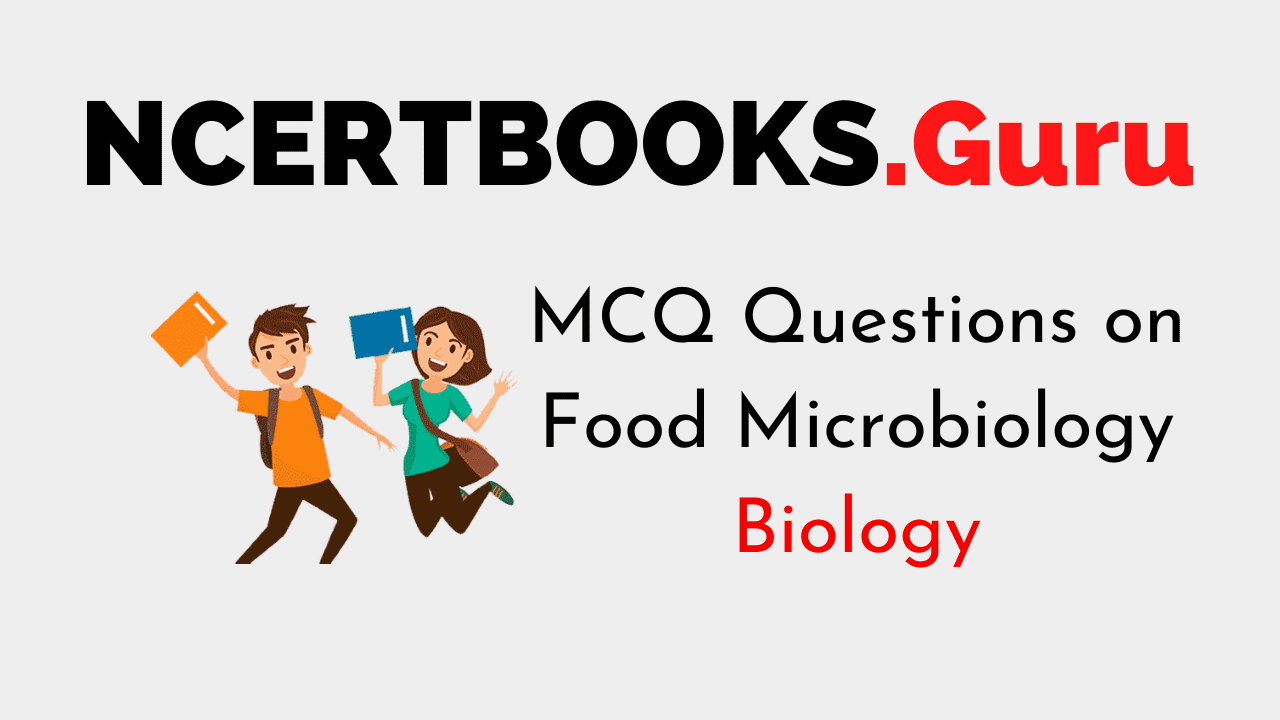Biology is the study of life. Below, You will find a list of Biology MCQ Questions as per the latest prescribed syllabus. Ace up your preparation with the Objective Questions available on Food Microbiology and enhance your subject knowledge. Understand the concept clearly by consistently practicing the Multiple Choice Questions and score well in your exams.
MCQ Questions on Food Microbiology
1. Which of the following is false for the thermal resistance of the bacterial cells?
(a) Cocci are usually more resistant than rods
(b) Cells low in lipid content are harder to kill than other cells
(c) Bacteria that clump considerably or form capsules are difficult to kill
(d) Higher the optimal and maximal temperatures for growth, higher the resistance
Answer
Answer: (b) Cells low in lipid content are harder to kill than other cells
2. The most spoilage bacteria grows at ______________.
(a) Acidic pH
(b) Neutral pH
(c) Alkaline pH
(d) All of the above
Answer
Answer: (b) Neutral pH.
3. The microbiological examination of coliform bacteria in foods preferably use______________.
(a) Mac Conkey broth
(b) Violet Red Bile agar
(c) Eosine Methylene blue agar
(d) All of the above
Answer
Answer: (d) All of the above.
4. Which of the following acids will have a higher bacteriostatic effect at a given pH?
(a) Maleic acid
(b) Citric acid
(c) Acetic acid
(d) Tartaric acid
Answer
Answer: (c) Acetic acid.
5. The different ACCs between food categories reflect the ______________.
(a) Potential shelf life
(b) Potential for the microbial growth during storage
(c) The expected level of contamination of the raw material
(d) All of the above
Answer
Answer: (d) All of the above.
6. An examination of the presence or absence of organisms refers to ______________.
(a) Incubation of a food suspension in an enrichment medium
(b) Incubation of a food suspension in an enrichment medium followed by inoculation onto a suitable selective medium
(c) Incubation of a food suspension in an enrichment medium followed by inoculation onto a non-selective medium
(d) All of the above
Answer
Answer: (b) Incubation of a food suspension in an enrichment medium followed by inoculation onto a suitable selective medium.
7. What are the intrinsic factors for microbial growth?
(a) pH
(b) Moisture
(c) Oxidation-Reduction Potential
(d) All of the above
Answer
Answer: (d) All of the above.
8. Plate count of bacteria in foods generally use the plating medium consisting of ______________.
(a) Peptone, glucose, sodium chloride, agar and distilled water
(b) Yeast extract, glucose, sodium chloride, agar and distilled water
(c) Peptone, yeast extract, glucose, sodium chloride and distilled water
(d) Peptone, yeast extract, glucose, sodium chloride, agar and distilled water
Answer
Answer: (c) Peptone, yeast extract, glucose, sodium chloride and distilled water.
9. Enumeration of microorganism refers to ______________.
(a) Non-selective plating, depending on the test.
(b) Either spiral plating, pour plate or spread plate of a food suspension on to a suitable selective agar
(c) Either A or B
(d) None of the above
Answer
Answer: (c) Either A or B.
10. Yeast and mould count determination requires ______________.
(a) Nutrient agar
(b) MacConkey agar
(c) Violet Red Bile agar
(d) Acidified potato glucose agar
Answer
Answer: (d) Acidified potato glucose agar.
11. Aerobiccolony count (ACC) is also referred as______________.
(a) Total viable count (TVC)
(b) Aerobic plate count (APC)
(c) Standard plate count (SPC)
(d) All of the above
Answer
Answer: (d) All of the above.
12. The time-temperature combination for HTST pasteurization of 71.1C for 15 sec is selected on the basis of ____________.
(a) E.coli
(b) Coxiella BVurnetii
(c) C.botulinum
(d) B.subtilis
Answer
Answer: (b) Coxiella Burnetii.
13. Suspected colonies of Staphylococcus aureus when grown on Baird-Parker medium shall show____________.
(a) Protease activity
(b) Catalase activity
(c) Coagulase activity
(d) None of the above
Answer
Answer: (c) Coagulase activity.
14. NaCl can act ____________.
(a) Transporting nutrients
(b) Antagonist at optimal concentrations
(c) Synergistically if added in excess of optimum level
(d) Both a and b
Answer
Answer: (d) Both a and b.
15. Water activity can act as ____________.
(a) An extrinsic factor
(b) A processing factor
(c) An intrinsic factor determining the likelihood of microbial proliferation
(d) All of the above
Answer
Answer: (d) All of the above
